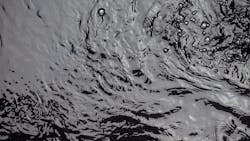What is solids handling?
The processes used to stabilize sludge and reduce its volume are known as solids handling.
The process occurs when a wastewater treatment plant is operating properly. Most solids in the wastewater will be removed at the plant, while the water is discharged as effluent to the receiving waters. These solids, or sludge, must be stabilized and reduced in volume before they can be reused or disposed of.
Solids handling includes thickening, digestion, dewatering and sludge disposal/reuse.
Once the sludge has been treated it can be converted to biosolids. Biosolids can be used for compost, fertilizer, and landfill cover.
Biosolids can add nutrients, improve soil structure, and enhance moisture retention.
Solids handling can decrease downtime and labor costs. Some foreign debris that can be avoided through the solids handling process include: flushable wipes, string, rags, hair, plastic fragments and more.
What solids handling equipment can be used?
Macerators and twin-shaft grinders are both options to stabilize sludge.
Macerators
Macerators are designed for in-line pipe installations and protect against solids and damage to downstream pumps and equipment. Macerators need to have liquid flowing through the pipe because they can not run dry. This method works better with small solids like hair, rags, and plastics.
Maceration produces ideal results when installed after primary screening or headworks systems. Macerators can not cut hard solids like rocks, metals, etc.
When an object becomes lodged in the screen and cannot be cut on the first pass in the macerator, an Amp increase is detected by the control panel and causes the Smart Relay to initiate the Auto Reverse program. Ultimately, this can help remove the lodged object.
Twin Shaft Grinders
Twin Shaft Grinders are designed for both in-line pipe installations and channels. Unlike macerators, grinders can run dry continuously and can handle larger solids to protect against solids and damage to downstream pumps and equipment.
Twin Shaft Grinders operate with two counter operating shafts with attached cutting blades. As the cutting blades turn, the solids are pulled into the center between the cutting blades. All solid material is processed through the grinder, without a debris trap.
The liquid, however, still flows around the outer opening of the housing, against the rotation. The diagram to the right illustrates the principle. All fluids coming through the pipeline go through the grinder blades, so everything is ground to small particles.
